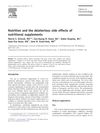The Association Between Melasma and Iron Profile: A Case-Control Study
June 2020
in “
Russian Open Medical Journal
”
TLDR Lower ferritin and serum iron levels may be linked to melasma.
This case-control study from 2020 investigated the association between melasma and iron profile in 51 women with melasma compared to 51 controls in Tehran, Iran. The study found no statistically significant differences in mean levels of ferritin, hemoglobin, mean corpuscular volume, iron, vitamin B12, total iron binding capacity, and folate between the groups. However, women with melasma had a higher frequency of below-normal ferritin and serum iron levels compared to the control group. Despite this, none of the serum parameters were correlated with the melasma area and severity index (MASI). The study concluded that there was a possible association between lower ferritin and serum iron levels and melasma.



